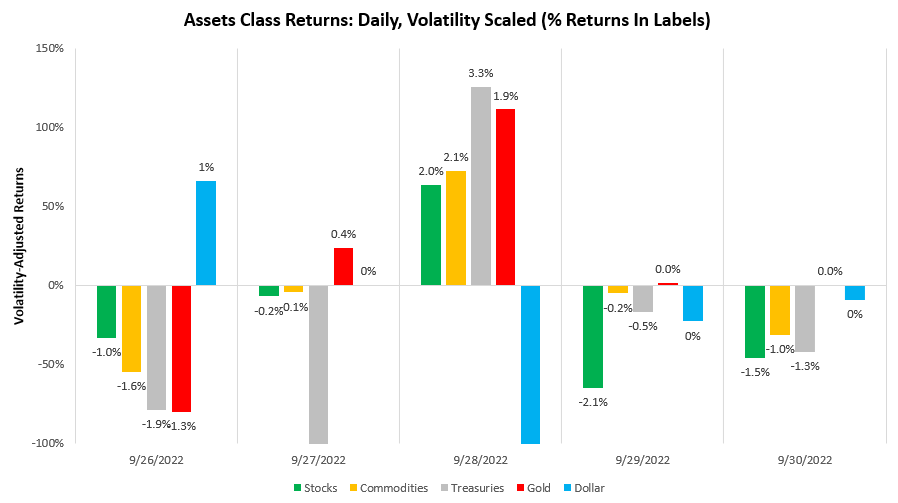Last week showed weak performance for all asset markets, following mixed economic data and turbulence in international markets. Below, we offer the evolution of market prices over the last week:
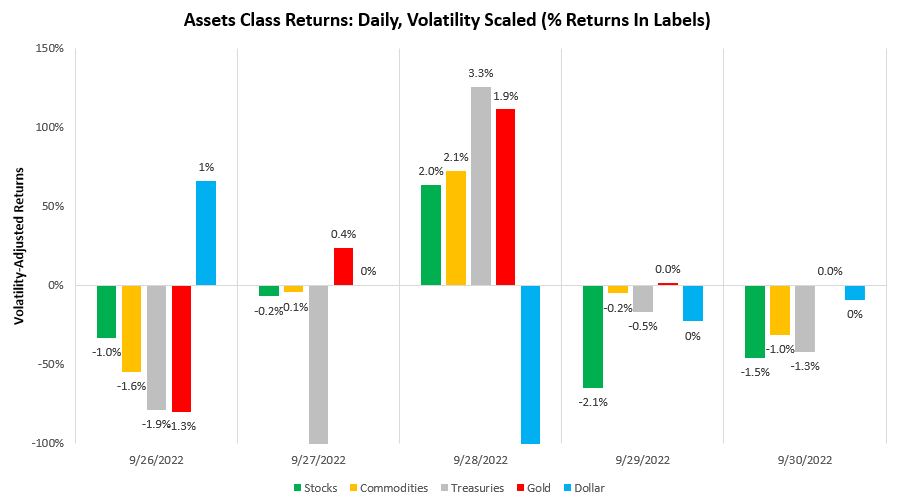
Economic data showed some degree of stabilization last week. However, our GDP Nowcast continues to a significant weakening in real growth relative to last year, with the latest reading sitting at approximately 1.0%. We show our GDP Nowcast below:
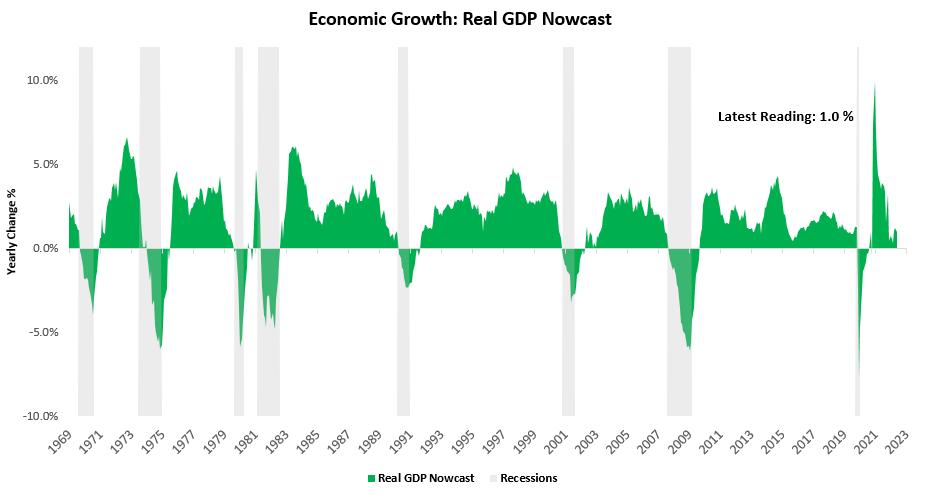
Alongside this slowdown in growth, we continued to see a downturn in corporate profitability. As our systems expected, Q2 profitability was weak, and our PMI composite suggests that there will be further weakness in Q3:
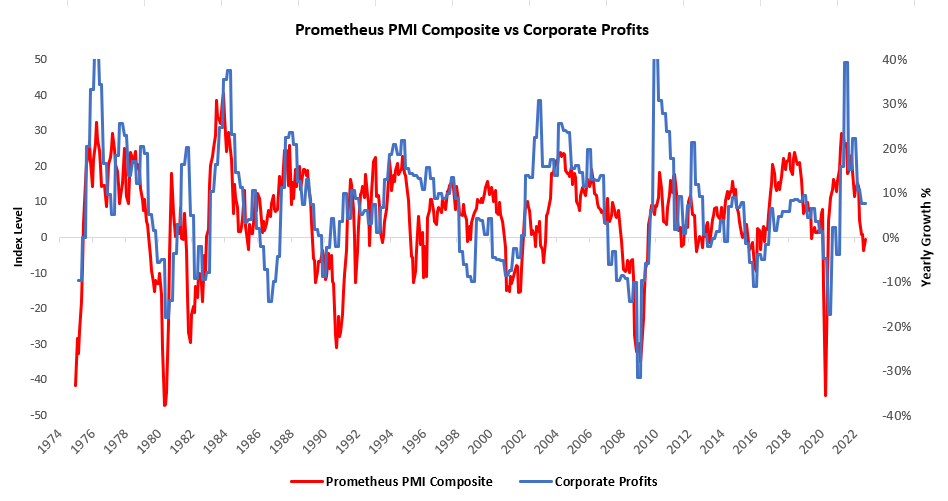
While corporate profitability may stay positive on a nominal basis, real corporate profitability matters for future output. The purpose of profitability is to reduce the real cost of capital. When real profitability declines, the purchasing power of profitability is eroded, i.e., every additional unit of profits generates less marginal output when invested. We are witnessing the initial stages of declining output, and current dynamics are likely to exacerbate these conditions. Of particular note is the increase in inventory contribution to gross investment:
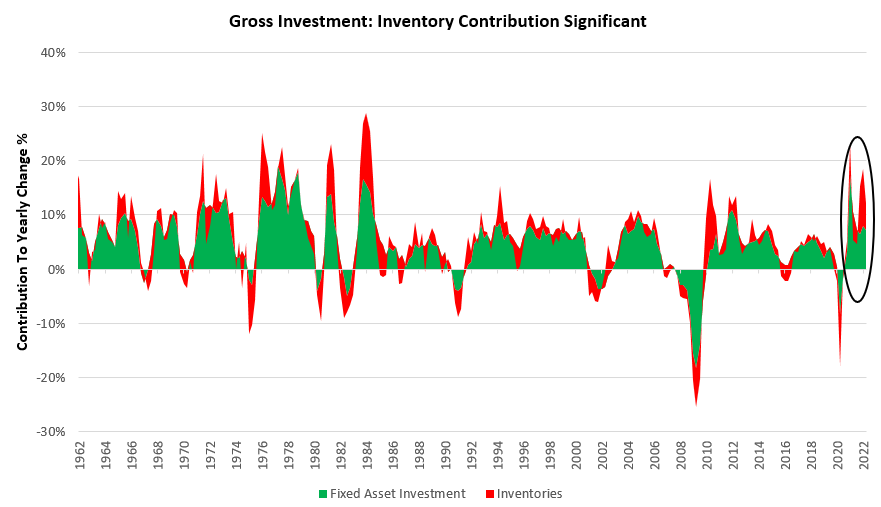
Inventory accumulation continues to be an issue this cycle. Contemporaneously, inventory build helps pad profits and GDP growth. However, there is only so much physical capacity to build inventories, and as this runs out, inventories become less contributive to growth. Our systems continue to indicate that production is likely to be the next proverbial shoe to drop, catalyzing the next leg lower in growth. We wait and watch as events unfold, and our systems adjust positions accordingly. Heading into next week, we receive a solid amount of economic data relevant to assessing our outlook:
-
Monday: ISM Manufacturing PMI, S&P Manufacturing PMI, Construction Spending
-
Tuesday: Total Manufacturing New Orders
-
Wednesday: Trade Balance, ADP Employment, S&P Svcs.
-
Thursday: Initial Claims, GDP Revisions Q2
-
Friday: Non-Farm Payrolls, Unemployment Rate, Hourly Earnings, Wholesale Inventories & Trade, Consumer Credit
Heading into next week, our positioning remains short assets and long the dollar. We show our positioning at the asset class level below:
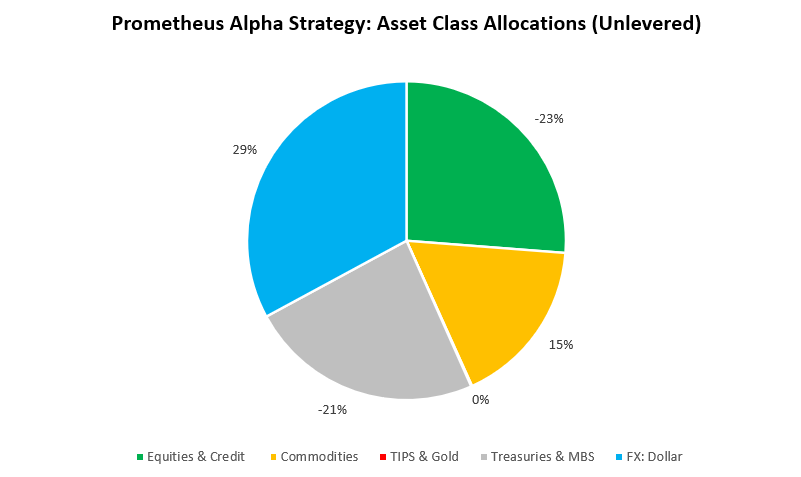
Additionally, we show our positions at the security level:
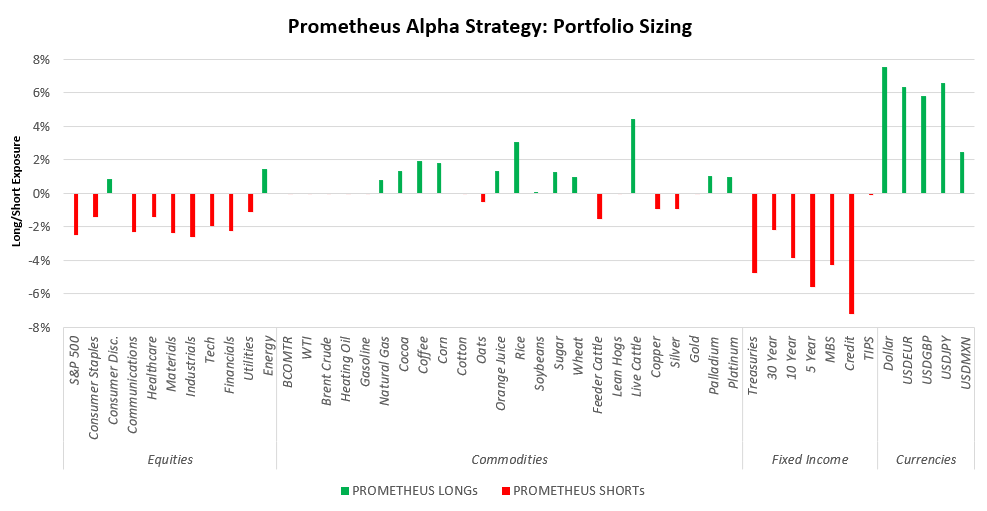
The primary risk to our views is a significant upside surprise in ISM data. While our estimates for the economic cycle continue to suggest further downwards pressure, our models also tell us there is potential for an upside surprise in the data on Monday:
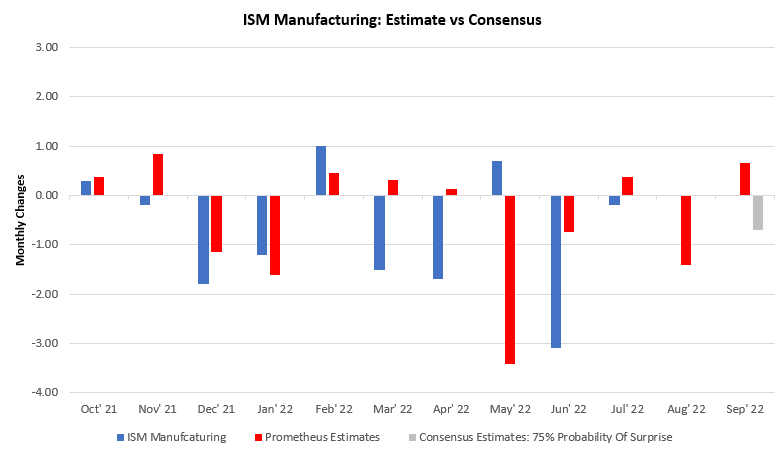
Our systems aren’t designed to trade data prints, but we forecast the upcoming economic data to assess risks to our testing positions. As we can see above, there is a significant possibility that ISM data surprises to the upside, which may alleviate some of the pressure on US equities and potentially even credit. Therefore, shorts need to be carefully managed around this event. While this print may result in counter-trend moves in PMI data, our gauges continue to tell us that the trajectory remains lower:
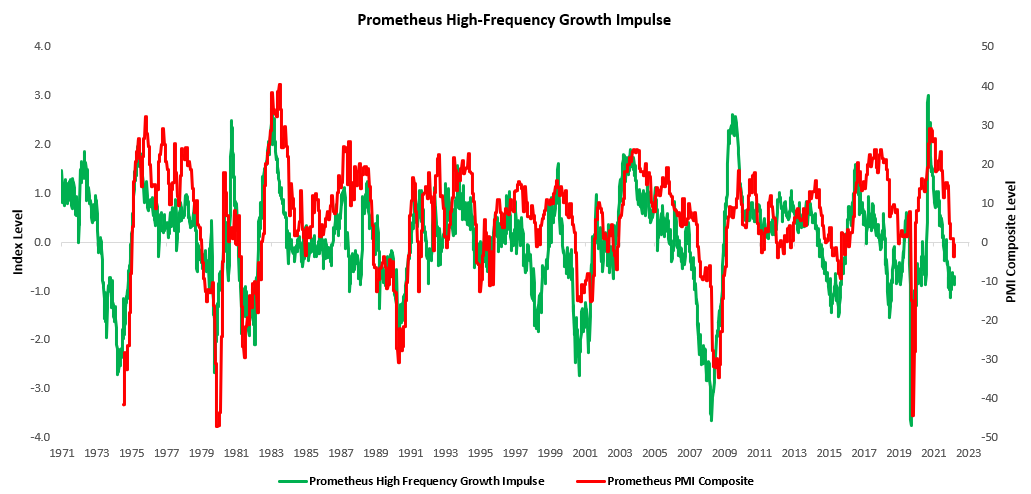
Our systematic assessment of growth continues to suggest we are on a path toward stagflation. The key question for markets now is how far the Fed will have to go to tame inflation. While this dynamic will be important for equity markets, we expect it to be even more important for Treasury securities. During the last stagflationary period of rising interest rates (the 1970s), there was a combination of factors required to form a durable bid for Treasury securities. The first was an abatement in inflationary pressures and interest rate hikes today, there remains significant uncertainty around these variables, and there is likely to be further tightening ahead. Second, following a peak in interest rates, there was a substantial bid for Treasury securities from yield-seeking economic players, i.e., depository institutions (banks). Currently, we are seeing the mirror image of this positioning dynamic, with commercial banks rapidly reducing their Treasury allocations.
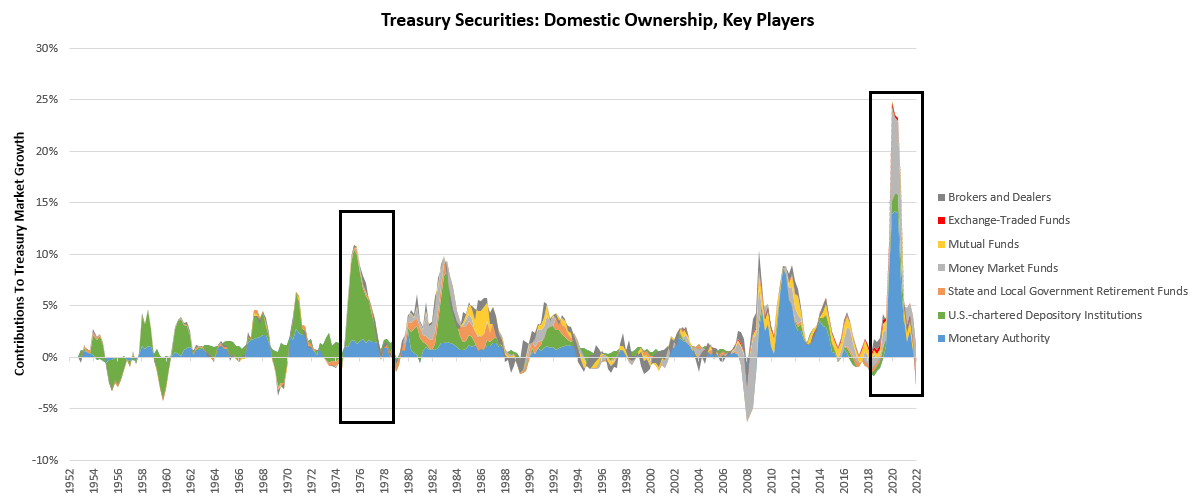
Eventually, a stabilization in rates at a higher level is likely to facilitate a re-uptake in Treasuries. However, this stabilization will likely only come alongside a stabilization in inflation, and we remain a ways off from this point. We continue to monitor the situation carefully. Our strategies continue to perform well in a difficult environment, and we continue to work to improve our performance to help guide investors through these tough times. We show our year-to-date portfolio performance below:
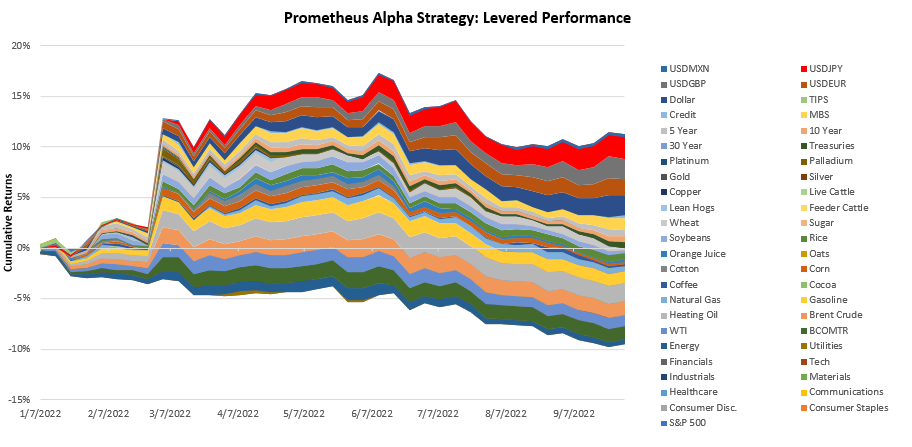
In our view, the road ahead gets more challenging than the journey so far. Stay nimble.

